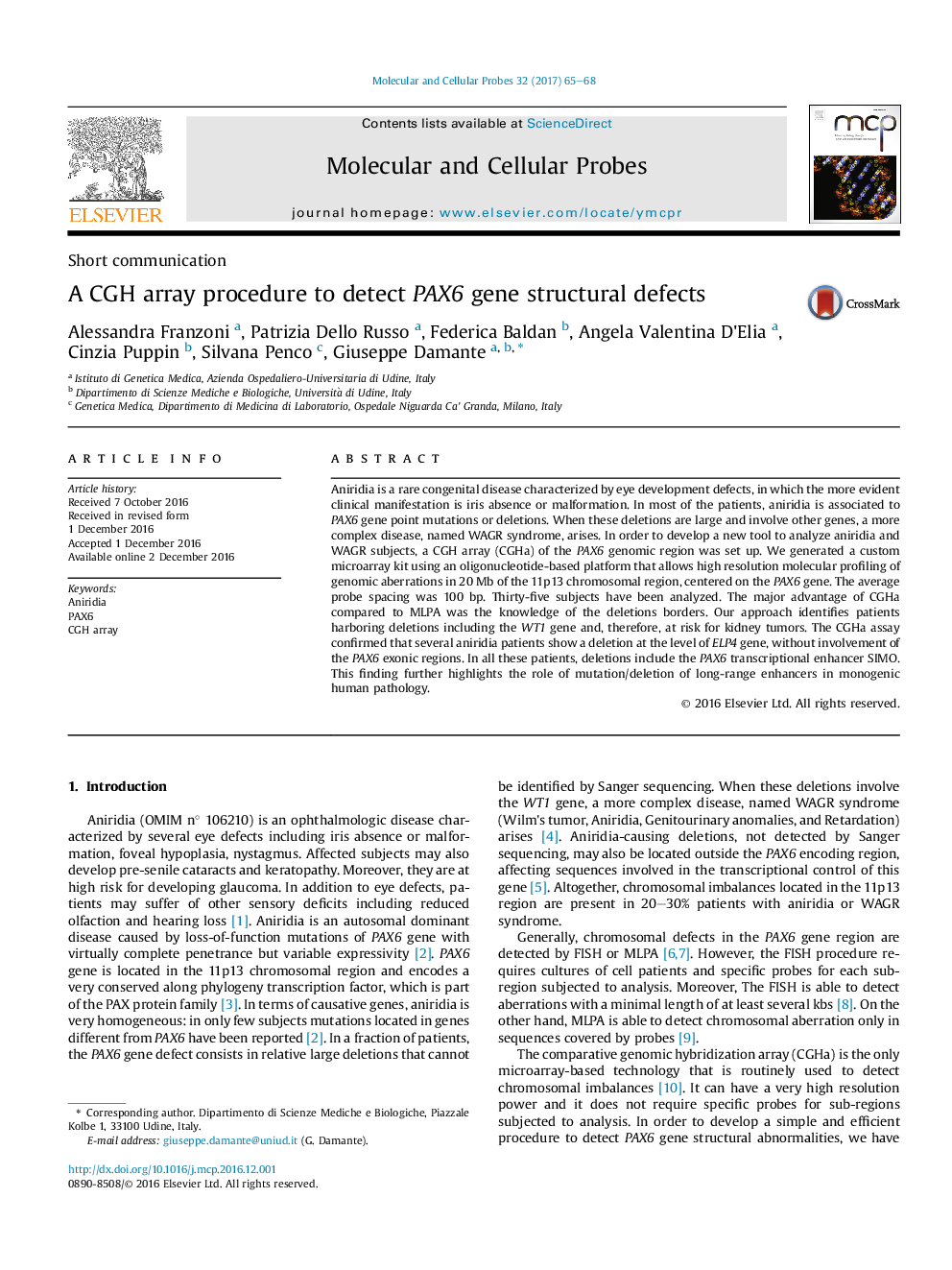| Article ID | Journal | Published Year | Pages | File Type |
|---|---|---|---|---|
| 5534503 | Molecular and Cellular Probes | 2017 | 4 Pages |
â¢A CGH array-based assay to characterize subjects suffering of aniridia or WAGR syndrome was generated.â¢Compared to MLPA, the advantage of the CGH array-based assay consists in the identifications of the deletion borders.â¢The common element found in all deleted patients contains the PAX6 transcriptional enhancer called SIMO.
Aniridia is a rare congenital disease characterized by eye development defects, in which the more evident clinical manifestation is iris absence or malformation. In most of the patients, aniridia is associated to PAX6 gene point mutations or deletions. When these deletions are large and involve other genes, a more complex disease, named WAGR syndrome, arises. In order to develop a new tool to analyze aniridia and WAGR subjects, a CGH array (CGHa) of the PAX6 genomic region was set up. We generated a custom microarray kit using an oligonucleotide-based platform that allows high resolution molecular profiling of genomic aberrations in 20Â Mb of the 11p13 chromosomal region, centered on the PAX6 gene. The average probe spacing was 100Â bp. Thirty-five subjects have been analyzed. The major advantage of CGHa compared to MLPA was the knowledge of the deletions borders. Our approach identifies patients harboring deletions including the WT1 gene and, therefore, at risk for kidney tumors. The CGHa assay confirmed that several aniridia patients show a deletion at the level of ELP4 gene, without involvement of the PAX6 exonic regions. In all these patients, deletions include the PAX6 transcriptional enhancer SIMO. This finding further highlights the role of mutation/deletion of long-range enhancers in monogenic human pathology.
